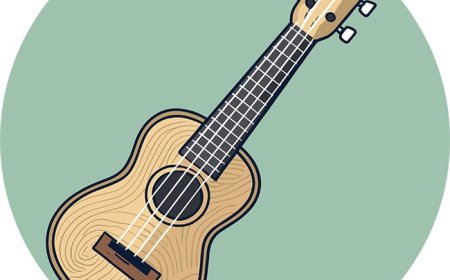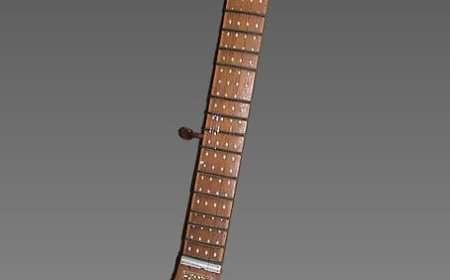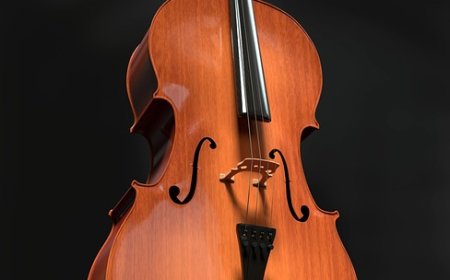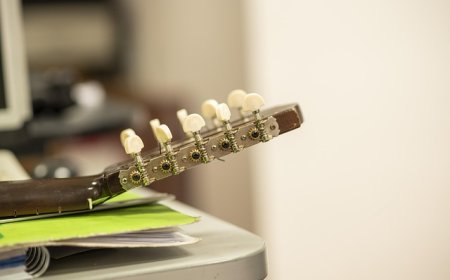Banjo Facts for Students | Learn About the Banjo and Its Fun Twangy Sound
Explore the banjo—a twangy, upbeat string instrument used in folk and bluegrass music. Learn about how it works, its parts, history, famous players, and how to get started.
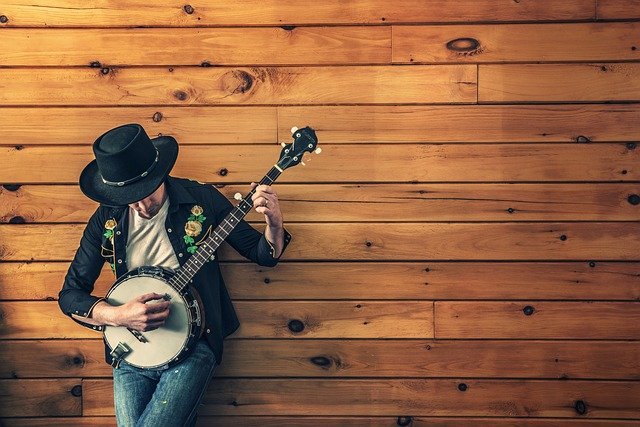
🪕 All About the Banjo
🥇 Introduction
The banjo is a fun and energetic string instrument that's easy to recognize by its round body and twangy sound. It's played by plucking or strumming the strings with the fingers or a pick, and it has a unique look thanks to its drum-like head. The banjo is a staple of bluegrass, folk, old-time, and country music, and it's also found in jazz, rock, and even classical styles. Its happy tone and rhythmic bounce make it a favorite among players of all ages.
🎶 What Is a Banjo?
A banjo is a plucked string instrument with a round body, a neck with frets, and a drum-like membrane that acts as the soundboard. Most banjos have four, five, or six strings, and they come in several types:
-
5-String Banjo - The most common, used in bluegrass
-
4-String Tenor Banjo - Popular in jazz and Irish music
-
6-String Banjo - Tuned like a guitar and played by guitarists
-
Banjo Ukulele (Banjolele) - A ukulele-shaped banjo with four strings
The banjo is known for its bright, percussive tone and is played using fingerpicks, clawhammer, or strumming techniques.
🧩 Parts of the Banjo
The banjo's special construction gives it its one-of-a-kind sound. Key parts include:
-
Head - The round, drum-like surface that vibrates like a snare drum
-
Body (Pot) - The circular wooden or metal frame holding the head
-
Neck - The long part with frets and strings
-
Frets - Raised metal strips across the neck that divide notes
-
Strings - Usually four or five, with one short "drone" string on 5-string banjos
-
Tuning Pegs - Used to tighten and tune each string
-
Bridge - A small wooden piece that sits on the head and holds the strings up
-
Tailpiece - Where the strings are anchored at the bottom
-
Resonator (optional) - A back piece that reflects sound toward the audience
-
Coordinator Rods - Metal rods inside that help adjust the neck angle
Banjos without a resonator are called open-back banjos and are popular in folk music.
⚙️ How Does the Banjo Work?
The banjo produces sound when the strings are plucked or strummed, causing them to vibrate. These vibrations travel to the bridge, which sends them into the drum head, creating a crisp, loud, and bouncy tone.
The fretted neck lets the player change notes and play melodies or chords. The short fifth string on a 5-string banjo adds a rhythmic drone and is usually plucked with the thumb.
Banjos are often played with:
-
Fingerpicks in bluegrass
-
Clawhammer technique in folk
-
Flatpicks in jazz or melodic playing
📜 History of the Banjo
The banjo has roots in West African instruments made from gourds and animal skin. Enslaved Africans brought these instruments to the Americas, where they evolved into the modern banjo during the 1700s and 1800s.
By the 1800s, the banjo was played in minstrel shows and became popular in folk and parlor music. In the 1900s, it became central to:
-
Old-time Appalachian music
-
Bluegrass, thanks to Earl Scruggs
-
Jazz and Dixieland, with 4-string tenor banjos
Today, the banjo is used in a variety of styles and has become popular again through folk revival, country music, and online videos.
🥁 Famous Banjo Players
These artists helped shape the sound of the banjo:
-
Earl Scruggs - Invented the 3-finger bluegrass style
-
Béla Fleck - Pushed the banjo into jazz, classical, and world music
-
Abigail Washburn - Folk banjoist who blends old-time and Chinese music
-
Steve Martin - Famous actor and talented banjo player
-
Rhiannon Giddens - Brings African-American roots of the banjo to light
-
Pete Seeger - Folk legend who used banjo for social change
-
Tony Trischka - Known for advanced bluegrass and teaching
🎶 Learning to Play the Banjo
The banjo is a fun instrument to learn, especially for students who like rhythm and energy. You'll learn:
-
Tuning the strings (G-D-G-B-D for 5-string)
-
Playing basic chords and strums
-
How to use fingerpicks or the clawhammer style
-
Learning simple bluegrass rolls or folk melodies
-
Reading tablature, a special kind of music for stringed instruments
Beginner banjos are affordable, and the light tension of the strings makes them easy on the fingers.
😄 Fun Facts About the Banjo
-
The banjo's bright tone comes from its drum-like head.
-
Some banjos are open-back, while others have a resonator for extra volume.
-
There's a ukulele-banjo hybrid called the banjolele.
-
Steve Martin won a Grammy-for banjo playing, not acting!
-
The 5th string on a banjo is shorter than the others and adds a special drone sound.
-
Banjos can have four, five, or even six strings!
-
Early banjos were made from gourds and animal hide.
👧 Kid-Friendly Summary
The banjo is a round string instrument with a happy, bouncy sound. You play it by plucking or strumming the strings. It's fun to play and great for folk and country music. With a little practice, you can play fast, twangy tunes and be part of a bluegrass band!
📚 Vocabulary Words
Banjo – A string instrument with a round body and twangy sound
Fret – A raised strip on the neck to change notes
Clawhammer – A traditional style of banjo playing with a downward motion
Resonator – A back piece that reflects sound outward
Drone String – A short string that plays a repeating pitch
Fingerpicks – Small plastic or metal picks worn on fingers
Bridge – The small wooden piece that lifts the strings above the drum head
Tablature – A way to read banjo and guitar music
❓ Interactive Quiz (8 Questions)
1. What kind of instrument is a banjo?
A. Wind
B. Percussion
C. String
D. Brass
2. What shape is the body of a banjo?
A. Square
B. Triangle
C. Round
D. Oval
3. What part of the banjo creates its twangy sound?
A. Sound hole
B. Wooden back
C. Drum head
D. Strings only
4. How many strings does a standard bluegrass banjo have?
A. Four
B. Five
C. Six
D. Seven
5. What is the name of the banjo style where you use the thumb and two fingers?
A. Flatpicking
B. Clawhammer
C. Three-finger style
D. Slide
6. Who made the 3-finger banjo style famous?
A. Pete Seeger
B. Earl Scruggs
C. Steve Martin
D. Jake Shimabukuro
7. What’s a banjolele?
A. A toy banjo
B. A mix of banjo and guitar
C. A small banjo with ukulele tuning
D. A jazz-only banjo
8. What are fingerpicks used for?
A. Tuning
B. Plucking strings
C. Pressing frets
D. Playing drums


















































